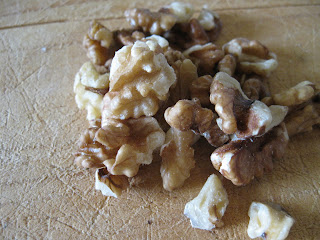The potential student pauses, "make pesto with the old 'basilico'.
"Basil," I correct. It's the end of the summer and before the basil leaves wither away to uselessness they have to be harvested.
On my district market, large bunches of basil, some already sporting little white flowers or the buds of flowers, are sold at reduced price. In a few weeks all of the summer basil will have dwindled to nothing but a few dying drying sticks on the plant.
There is nothing nicer than the smell of fresh basil, no leaf which is more reminiscent of Italy even if it is an Asian native. It is the protagonist of so many iconic Italian dishes: the Pizza Margarita with its depiction in colours of the Italian flag: green basil, red tomatoes and white mozarella; or the Insalata Caprese another combination of tomatoes, basil and mozarella, to name but two. It can be added to salads and dressings for added fragrance, sprinkled over pasta even added to desserts (basil panna cotta).
But maybe the dish most associated with basil is pesto. The name pesto comes from the verb 'pestare' - to crush, to grind which is what happens to the basil leaves in the mortar. Pesto is a type of paste, a combination of ingredients crushed and ground to divine effect. There are many types of pesto.
The one that springs to mind most often is the pesto alla genovese. Basil, parmesan, pine nuts, garlic and olive oil are the key ingredients. Purists will claim that only a certain type of garlic (di Vessalico, because it's more digestible and less invasive in flavour than other garlics), only basil bearing the DOP certification (of protected origin) and only Ligurian olive oil may be used. The ingredients must be crushed in a marble mortar but with a wooden pestle and fast so as not to overheat the basil and thus run the risk of bitter juices spoiling the final result. Every autumn in Genoa, Liguria a pesto making competition is held.
The one that springs to mind most often is the pesto alla genovese. Basil, parmesan, pine nuts, garlic and olive oil are the key ingredients. Purists will claim that only a certain type of garlic (di Vessalico, because it's more digestible and less invasive in flavour than other garlics), only basil bearing the DOP certification (of protected origin) and only Ligurian olive oil may be used. The ingredients must be crushed in a marble mortar but with a wooden pestle and fast so as not to overheat the basil and thus run the risk of bitter juices spoiling the final result. Every autumn in Genoa, Liguria a pesto making competition is held.
Nowadays an easy short cut is to put all the ingredients in the food processor and pulse them to a paste. Pulsing is required, again to avoid overheating the ingredients. Purists will claim that the final product is not pesto!
 |
| A tale of two pestos. The layer of oil on top is added to preserve the pesto. |
Other common pestos are the Sicilian and Trapanese versions. For the Sicilian version the pine nuts are replaced by almonds. ricotta replaces the parmesan and tomatoes (the oval perini) are added which give the pesto its distinctive red color. In the version from Trapani, a Sicilian town, the ricotta is substituted by pecorino which gives this pesto alla Trapanese a saltier grittier flavour.
Once made the pesto can be kept up to ten days in a jar, always add some olive oil on top to keep the pesto fresh. It can also be frozen, hence it's possible to make it in large quantities and save for a month when fresh basil is hard to find.
 |
| Trapanese pesto frozen |
Traditionally pesto goes on pasta, a little of the boiling cooking water is often used to loosen the paste but it can be used in other ways. A dab on some fried zucchini, as a spread on a sandwich, in a risotto, with chicken breasts , in a baked potato etc....anywhere it's used it's a winner.


